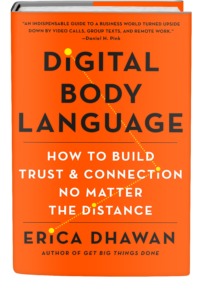Every person pursuing a career has run into a work environment that was less than ideal, you might even say they were toxic. Ana Dutra Has put together her observations about toxic workplaces in her new book, Lessons in LeadershiT – no, that’s not a typo. the lessons she has learned and her incredible ability to communicate them provide tremendous insight to those of us who are looking to create healthier environments for ourselves in the teams we lead. I invite you to listen to this conversation I was able to have with her about her book and the many the lessons it contains. You won’t regret making the time to listen.
Every workplace has its archetypical team members. In view of the archetypes, what can be done to make a toxic workplace more healthy? Ana Dutra explains
One of the things I love about Ana’s new book, Lessons in LeadershiT: Detoxing the Workplace is that she describes a series of archetypes that represent the various types of team members that typically exist in any organization. The way she uses language to express the variety of difficulties every team of professionals experiences it’s helpful in pulling back the curtain on our own tendencies so that we can take a long hard look at what is beneath the surface and make the adjustments needed to contribute to a healthier work environment. You will enjoy hearing her descriptions of those archetypes as well as the opportunity to consider which one might represent you. Please take the time to listen to this great episode.
Being a leader is about knowing how to deal with the LeadershiT that happens in a toxic workplace
There is always going to be toxicity and problems in any environment where people are working together. It is the leader’s job to address those issues effectively so that the environment can become healthy and the team can work together successfully. Ana Dutra points out that being a leader is about knowing how to deal with those kinds of situations, not run away from them. She gives some great advice on how leaders can do that as wellas gives tips about the kinds of things they need to be aware of as they address the contributors to a toxic work environment. It’s all on this episode.
Ana Dutra’s perspective on why 2017 was a year full of LeadershiT issues, and what she thinks is coming in 2018
It seems that 2017 was a year filled with scandals surrounding leadership both in politics and in companies across the globe. I was curious how Ana Dutra perceives what happened in 2017 and how she thinks leadership is changing in light of those things. Her honest answer was surprising; she doesn’t think the things that happened in 2017 are anything new, the only thing that was new was that they were dragged out into the light and people were able to stand up and say “no more.” You can hear the advice Ana provides regarding how to undo the damage of poor leadership and steer a work team in a different direction, on this episode.
Ana Dutra gives advice on how leaders can reduce their LeadershiT behaviors and become truly empowering leaders
Leaders need to understand that their approach to ridding their team culture of toxic elements begins with them. They first need to look inside and be sure to put themselves under the magnifying glass to make improvements where they are needed. But they also need to demonstrate a willingness to be in uncomfortable places for the sake of their personal growth. Toxic workplaces don’t improve accidentally, leaders have to pave the way, partly by their own example. Ana Dutra explains how to take steps in that direction, on this episode of the podcast.
Outline of This Episode
- [0:47] Ana’s thoughts about what it means to be a leader
- [3:00] The reason Ana wrote her book and why she gave it such a provocative title
- [12:06] The LeadershiT of 2017 – is it new or the same old thing?
- [14:21] How Leadership has changed in view of technology
- [16:58] Ana’s tips for reducing our potential LeadershiT behaviors
Resources & People Mentioned
- AnaDutra.chicago@gmail(dot)com or Ana.Dutra@Mandala-global.com
- BOOK: Lessons In LeadershiT
- Ana on LinkedIn
- https://www.executivesclub.org/
- Mandala Global Advisors
Connect with Erica
Erica@cotentialgroup.com






